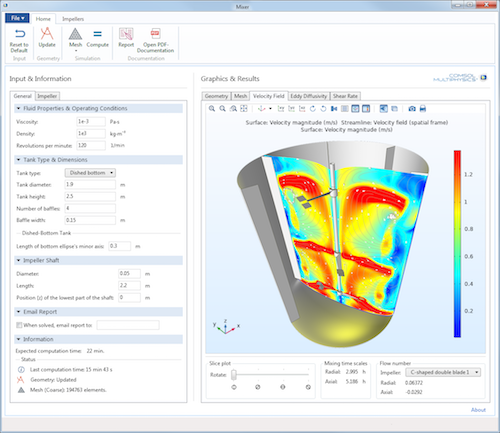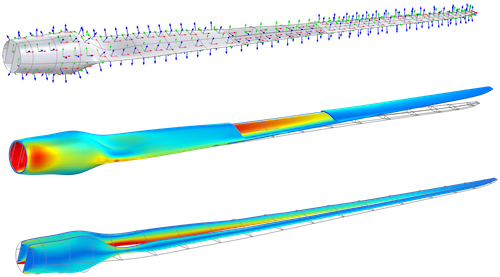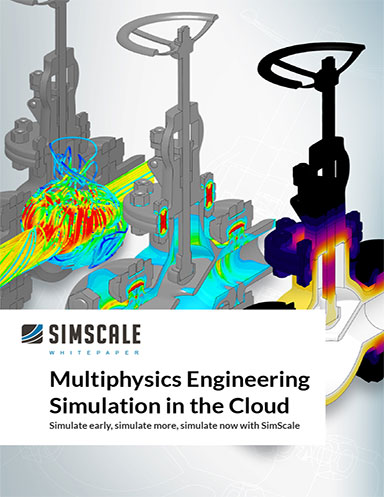Compiler, New Modeling Tools Headline Latest COMSOL Release
The COMSOL Compiler can be tapped to create standalone COMSOL multiphysics applications that don’t require any additional licenses to run.

The COMSOL Compiler can be tapped to create standalone COMSOL multiphysics applications that don’t require any additional licenses to run. Image Courtesy of COMSOL.
October 8, 2018
After 20 years in the making, COMSOL just made good on a long-standing promise to customers, releasing a compiler that enables easy distribution of simulation applications as part of its latest multiphysics release.
The compiler capability, which helps democratize simulation applications beyond what is possible with the COMSOL Server, has been a difficult promise to pull off given the historical limitations of engineering workstation environments. Applications compiled with the compiler are bundled with COMSOL Runtime, so there is no additional license necessary, which allows users to extend simulation-based tools both internally as well as to partners and customers.
“It took us 20 years to deliver an ability to create standalone apps that don’t require a full COMSOL Multiphysics or COMSOL Server license,” said Svante Littmarck, COMSOL president and CEO, at its recent user conference. “We couldn’t do it then because it would take forever to run a model, but today, computers are so much more powerful than they were 20 years ago.”

COMSOL’s new Composite Materials Module delivers modeling tools for working with layered materials. Image Courtesy of COMSOL.
The COMSOL Compiler joins a number of other features headlining the COMSOL Version 5.4 release. Also new is the Composite Materials Module, a toolset aimed at helping engineers working with layered materials such as the laminated structures used in aerospace and wind turbine applications. Unlike other composite simulation packages, COMSOL is enabling composite simulation in a multiphysics context, which greatly expands functionality for testing against heat transfer or electromagnetics, for example. For instance, the ability to couple composite simulation with thermal analysis would allow design engineers to explore the impact of lightning strikes on aircraft wings or on wind turbine blades.
While coupling composite simulation with other modalities might have been possible before, it was laborious and potentially error-prone. “Typically engineers would be using three different software packages, which means there was a lot of complex hand offs,” explains Valerio Marra, COMSOL marketing director. “How do engineers want to spend their time, modeling or making software tools work together?”
Accompanying these two new modules are a variety of other enhancements throughout the platform, including numerous performance improvements such as an updated memory allocation scheme that delivers faster computations for Windows 7 and 10 operating systems and on computers with more than eight processor cores.

COMSOL 5.4’s topology optimization tool finds the optimal material distribution when the structural part is subjected to two load cases. Image Courtesy of COMSOL.
Other new enhancements:
- A new topology optimization tool that lends itself for additive manufacturing designs.
- Additional large eddy simulation (LES) and Fluid Structure Interaction (FSI) for multiphase flow and multibody dynamics as part of its fluid flow analysis capabilities.
- Support for multiple parameter nodes in Model Builder and the ability to color physics and geometry selections.
- Enhancements to the electromagnetics capabilities, including support for Structural Thermal Optical Performance (STOP) analysis for ray optics.
Watch this tutorial to learn more about how to build COMSOL apps.
More COMSOL Coverage
For More Info
Subscribe to our FREE magazine, FREE email newsletters or both!
About the Author
Beth Stackpole is a contributing editor to Digital Engineering. Send e-mail about this article to [email protected].
Follow DE





